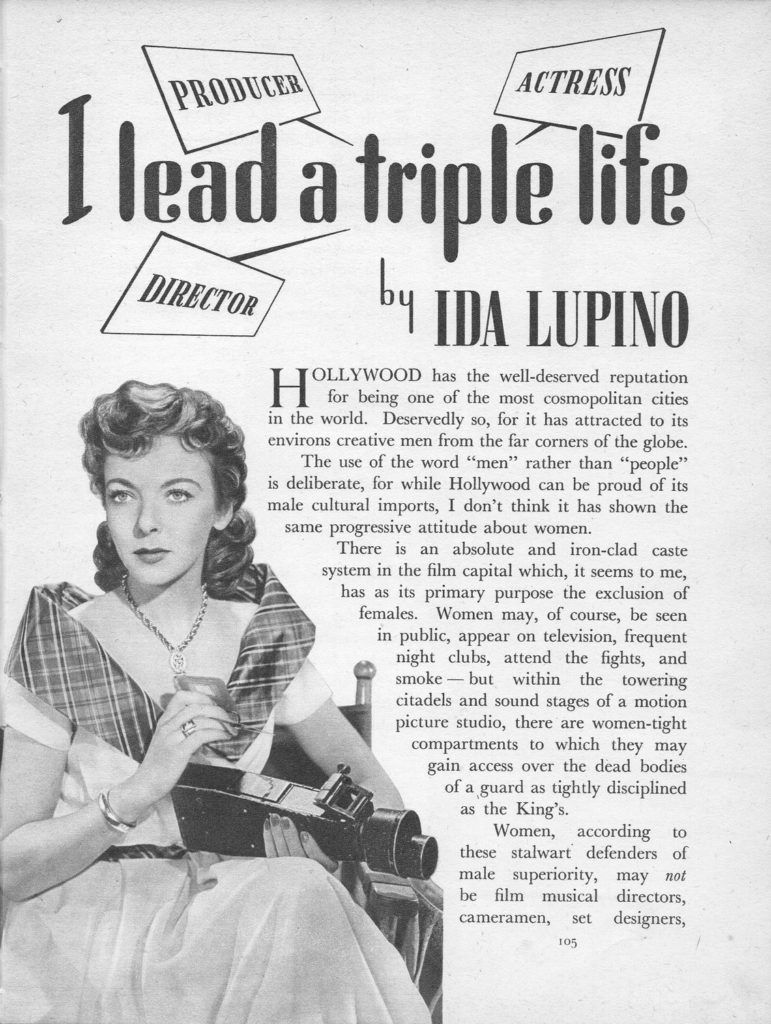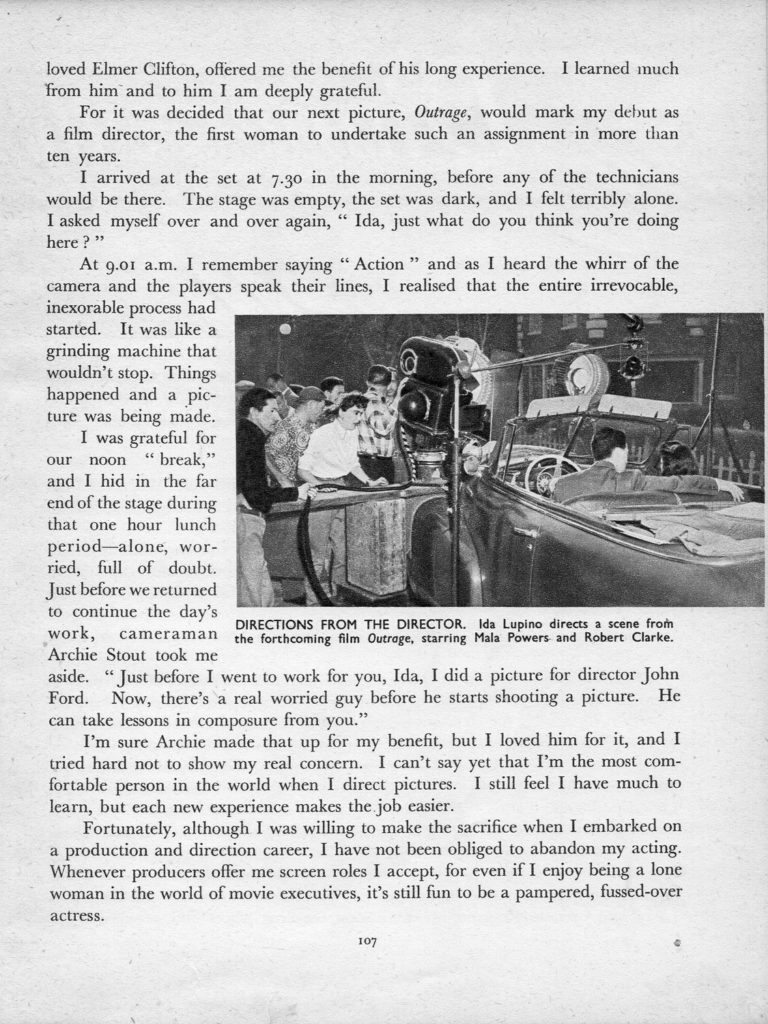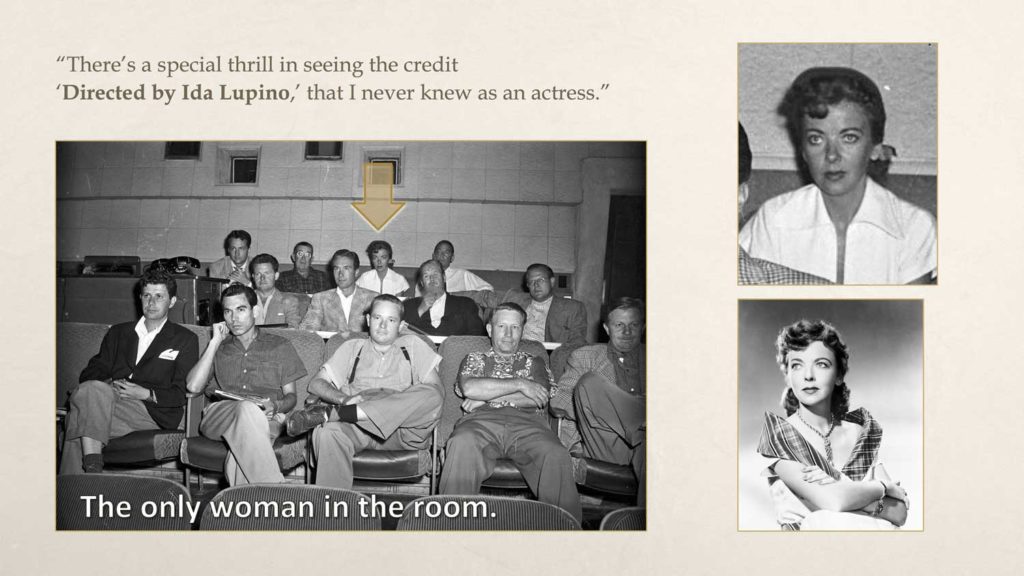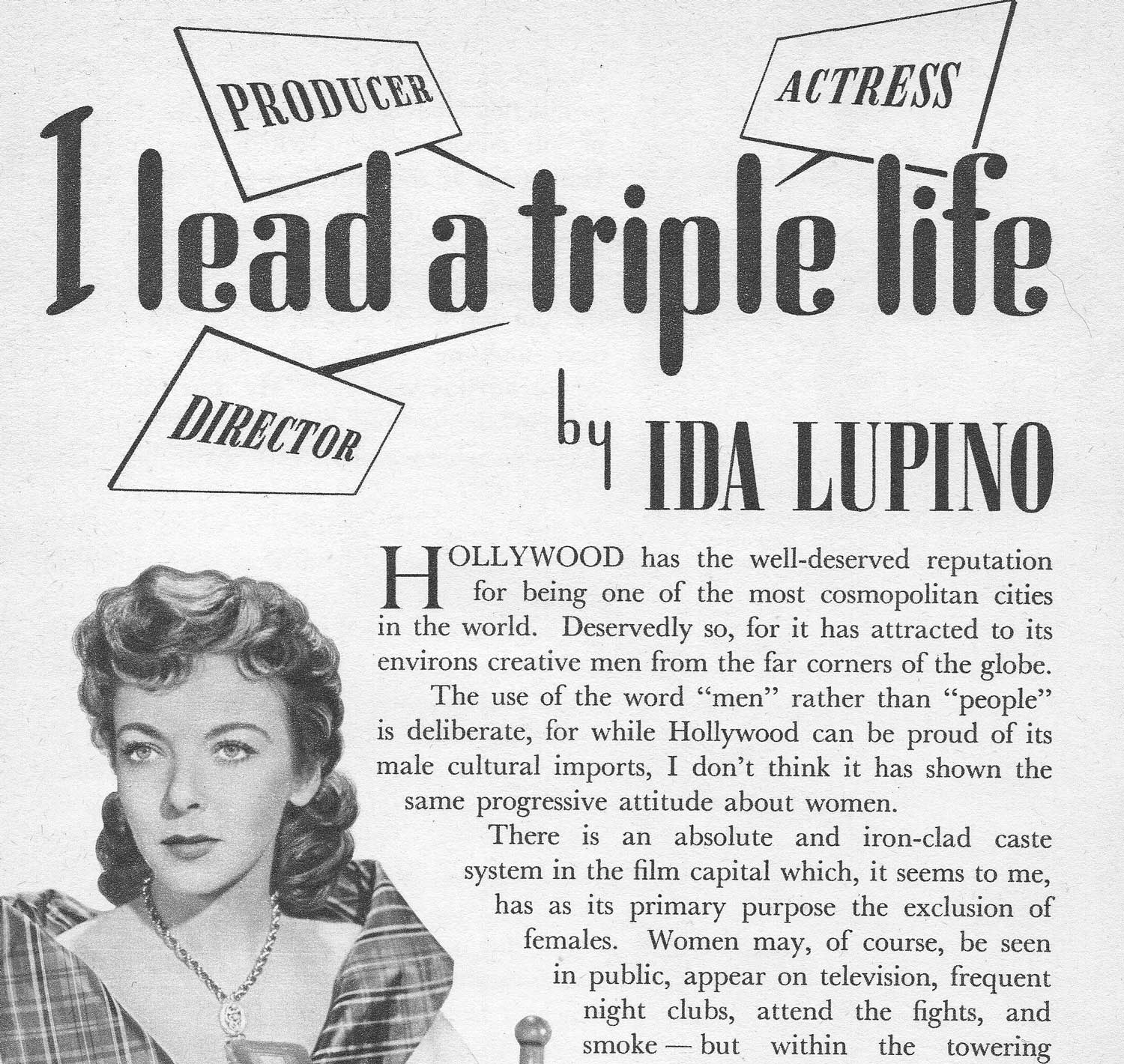This is an interesting article penned presumably by Ida Lupino just before she made The Hitch-Hiker (1953), one of the great Lone Pine films. The article appeared in the popular British yearly, The Film Show Annual, c1951.
She states quite emphatically that Hollywood of the time did not have a “progressive attitude about women“. She writes that “there is an absolute and iron-clad caste system in the film capital… which as its primary purpose the exclusion of women“. Within the studios “there are women-tight compartments to which women may gain access over the dead bodies of a guard as tightly disciplined as the King’s“.
“Women, according to the stalwart defenders of male superiority, may not be film musical directors, cameramen, set designers, composers, assistant directors, directors, or production managers. In short, the only sort of job encouragement which women get in Hollywood is the portrayal of women on the screen. Sometimes I suspect we are resented for even this intrusion.”



As I have indirectly indicated she may or may not have written the piece. For the most part these fan magazine articles were the product of studio publicity departments. However as Ida, with her then husband, Collier Young was running a small independent film production company she would have had control over most of her company’s activities and also as she enjoyed writing she may well have written the article.
However later when asked to comment on working with men on the set she she would often coyly say that it was important not to antagonise or alienate her fellow workers. She would play at being very campy: “Honey, could you help old Mother here,” she’d say, or “Mum’s in a bad spot, I want to get the camera over there.” She had to be shrewd in dealing with the men around her. She pretended to know less about the mechanics of filmmaking than she did so she could get full cooperation from her crew. She extended this attitude to studio execs and censors.

Working with Archie Stout
“Ida has more knowledge of camera angles and lenses than any director I’ve ever worked with, with the exception of Victor Fleming. She knows how a woman looks on the screen, and what light that woman should have, probably better than I do.”
Archie Stout, cinematographer.

Archie Stout made many films in the Lone Pine area and virtually wrote the text book on how to film in the Alabama Hills. He is known for his work on The Quiet Man (1951), Fort Apache (1952) and The High and the Mighty (1954). He worked with Ida on her first three films. They were Never Fear (1950), Outrage (1950) and Hard, Fast and Beautiful (1951), above. At this time he joined John Ford’s production team for The Quiet Man (1952) and become the only cinematographer to be nominated and win an Academy Award for second unit photography, for that film.
We hope to feature more on Ace Cinematographer, Archie Stout in later posts for What’s Playing at the Roxie?



1 thought on ““I Lead a Triple Life” by Ida Lupino”
Ida was very much in the vanguard of opening up possibilities for women working behind and beyond the camera in Hollywood. By starting her own production company she could gain a foothold into making her own films on subjects that particularly interested her. Early success helped and by the time she directed “The Hitch Hiker” she was well on the way.